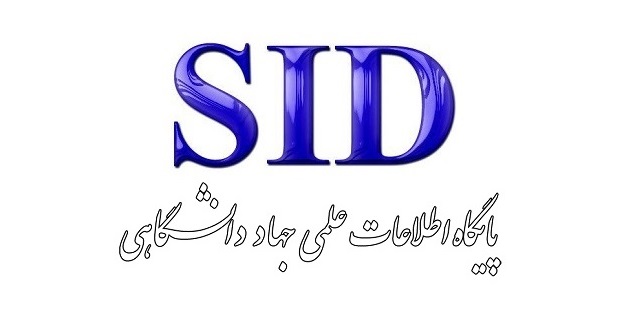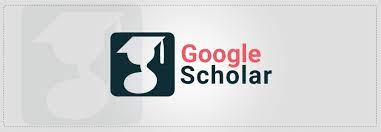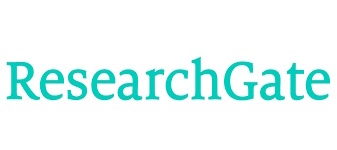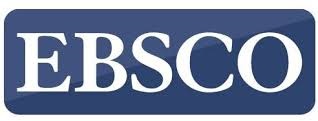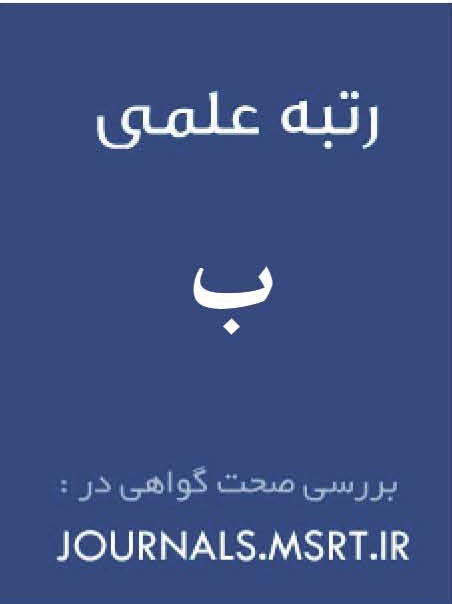پیش بینی ریسک حسابرسی براساس الگوریتم حافظه طولانی کوتاه مدت (LSTM)
کلمات کلیدی:
پیش بینی ریسک حسابرسی, یادگیری عمیق, الگوریتم حافظه طولانی کوتاه مدتچکیده
هدف پژوهش حاضر پیش بینی ریسک حسابرسی براساس الگوریتم حافظه طولانی کوتاه مدت در شرکتهای پذیرفته شده در بورس اوراق بهادار تهران و مقایسه نتایج حاصل از آن با سایر الگوریتمهای یادگیری عمیق میباشد. به منظور نیل به این هدف 1650 سال-شرکت (150 شرکت برای 11 سال) مشاهده جمع آوری شده از گزارشهای مالی سالیانه شرکتهای پذیرفته شده در بورس اوراق بهادار تهران در طی دوره زمانی 1392 تا 1402 مورد آزمون قرار گرفته اند. در پژوهش حاضر از چهار الگوریتم یادگیری عمیق ( شامل الگوریتمهای حافظه طولانی کوتاه مدت (LSTM)، ماشین بردار پشتیبان(SVM)، شبکه عصبی پیچشی(CNN) و شبکه عصبی بازگشتی (RNN)) و همچنین جهت انتخاب متغیرهای نهایی پژوهش از روش آزمون مقایسه میانگین دو نمونه جهت ایجاد مدل استفاده شده است. نتایج حاصل از الگوریتمهای یادگیری عمیق نشان میدهد که صحت کلی الگوریتمهای LSTM، SVM، CNN و RNN به ترتیب 99.1%، 89.6%، 85.8% و 96.4% میباشد که نشان دهنده این است الگوریتم LSTM بهترین عملکرد و الگوریتم CNN بدترین عملکرد را در پیش بینی ریسک حسابرسی دارد. به عبارت دیگر، نتایج نشان دهنده کارآ بودن الگوریتم حافظه طولانی کوتاه مدت (LSTM) نسبت به سایر الگوریتمهای یادگیری عمیق میباشد. بنابراین در شرکتهای پذیرفته شده در بورس اوراق بهادار تهران الگوریتم LSTM کاراترین مدل را برای پیش بینی ریسک حسابرسی فراهم میکند. یافتههای پژوهش حاضر میتواند اطلاعات سومندی در بهبود پیش بینی ریسک حسابرسی و کاهش خطا در ارزیابی اطلاعات صورتهای مالی، ارزیابی بهتر شواهد حسابرسی بر مبنای اطلاعات و اتخاذ اظهارنظر مبتنی بر واقعیت توسط حسابرسان فراهم کند.
دانلودها
مراجع
Al-Din, S., Al-Hayik, Y., & Abu-Naser, S. S. (2023). Neural Network-Based Audit Risk Prediction: A Comprehensive Study. International Journal of Academic Engineering Research (IJAER), 7(10), 43-51.
Bagheri, M., & Lotfallian, M. (2024). Examining the Impact of Financial and Operational Risks on Audit Quality in Companies Listed on the Tehran Stock Exchange. 7th International Conference on Innovative Ideas in Management, Economics, Accounting, and Banking, https://civilica.com/doc/2023922/
Cohen, J., Krishnamoorthy, G., & Wright, A. (2010). Corporate governance in the post‐Sarbanes‐ Oxley era: Auditors' experiences. Contemporary Accounting ResearchVL - 27(3), 751-786. https://doi.org/10.1111/j.1911-3846.2010.01026.x
Cohen, J. R., Hoitash, U., Krishnamoorthy, G., & Wright, A. M. (2014). The effect of audit committee industry expertise on monitoring the financial reporting process. The Accounting Review, 89(1), 243-273. https://doi.org/10.2308/accr-50585
Darabi, R., Alizadeh Pirali, F., & Dabestani, M. (2020). A Review of Theoretical and Empirical Literature on the Impact of Macroeconomic Conditions on Audit Risk. Accounting and Management Perspectives, 3(37), 12-18.
DeFond, M., & Zhang, J. (2014). A review of archival auditing research. Journal of Accounting and Economics, 58(2), 275-326. https://doi.org/10.1016/j.jacceco.2014.09.002
Deng, M., Lu, T., & Wen, X. (2023). Does Audit Risk Disclosure Improve or Impair Audit Quality and Investment Efficiency? https://doi.org/10.2139/ssrn.4540951
Engel, E., Hayes, R. M., & Wang, X. (2010). Audit committee compensation and the demand for monitoring of the financial reporting process. Journal of Accounting and Economics, 49(1-2), 136-154. https://doi.org/10.1016/j.jacceco.2009.08.001
Faridi Mayvan, M., Momeni, A., & Moghadam, A. (2022). Testing Audit Risk Assessment Under the Influence of Corporate Social Responsibility Disclosure. Accounting and Management Auditing Knowledge, 11(43), 309-321.
Gholami, H., & Dashtbani, G. (2021). Examining the Relationship Between Audit Quality and Audit Risk in Companies Listed on the Tehran Stock Exchange. Accounting and Management PerspectivesVL - 4(49), 122-135.
Hammersley, J. S., Johnstone, K., & Kadous, K. (2011). How do audit seniors respond to heightened fraud risk? Auditing: A Journal of Practice & Theory, 30IS - 3, 81-101. https://doi.org/10.2308/ajpt-10110
Hamti, D., Arab-Salehi, M., & Tolouei Ashlaghi, A. (2020). Audit Risk Assessment Using a Data Mining Approach (Case Study: Bank Loans). Accounting and Management Auditing Knowledge, 9(34), 157-167.
Hamti, D., & Tolouei Ashlaghi, A. (2022). Audit Risk Assessment Using a Data Mining Approach Based on Neural Networks in Companies Listed on the Tehran Stock Exchange. Auditing Knowledge, 5(89), 216-245.
Heydinejad, G., Jamshidi Navid, B., & Ghanbari, M. (2021). The Relationship Between Audit Committee Effectiveness and Audit Risk. Accounting and Auditing Research, 13(52), 185-206.
International, A., & Assurance Standards, B. (2011). Audit quality. An IAASB perspective. http://www.ifac.org/sites/default/files/publications/files/audit-quality-an-iaasb-per.pdf
International Organization of Securities, C. (2009). Consultation report on transparency of firms that audit public companies. http://www.iosco.org/library/pubdocs/pdf/IOSCOPD302.pdf
Kim, J. B., Lee, J. J., & Park, J. C. (2015). Audit quality and the market value of cash holdings: The case of office-level auditor industry specialization. Auditing: A Journal of Practice & Theory, 34(2), 27-57. https://doi.org/10.2308/ajpt-50903
Krishnan, G. V., & Visvanathan, G. (2009). Do auditors price audit committee’s expertise? The case of accounting versus nonaccounting financial experts. Journal of Accounting, Auditing & Finance, 24(1), 115-144. https://doi.org/10.1177/0148558X0902400107
Krishnan, J., Li, C., & Wang, Q. (2013). Auditor industry expertise and cost of equity. Accounting Horizons, 27(4), 667-691DO - 610.2308/acch-50513.
Kurt, A. C. (2022). Audit Risk and the Benefits of Employing Specialist Auditors: Evidence from Firms with Major Government Customers. https://doi.org/10.2139/ssrn.4199751
Nurmawanti, S., Lenggogeni, L., & Yanti, H. B. (2024). The Effect of Competence, Time Budget Pressure and Professional Attitudes of Auditors on Internal Audit Quality With Role Conflict As a Moderating Variable. Dinasti International Journal of Economics, Finance & Accounting (DIJEFA), 4(6).
O. Abu-Mehsen, D., Abu Nasser, M. S., Hasaballah, M. A., & Abu-Naser, S. S. (2023). Predicting Audit Risk Using Neural Networks: An In-depth Analysis. International Journal of Academic Information Systems Research (IJAISR), 7(10), 48-56.
Porcuna-Enguix, L., Bustos-Contell, E., Serrano-Madrid, J., Labatut-Serer, G., & Public Company Accounting Oversight, B. (2021). Constructing the Audit Risk Assessment by the Audit Team Leader When Planning: Using Fuzzy Theory The process for Board determinations regarding firms’ efforts to address quality control criticisms in inspection reports. Mathematics, 9(23), 3065. https://doi.org/10.3390/math9233065
Public Company Accounting Oversight, B. (2010). Consideration of registration applications from public accounting firms in Non-U.S. jurisdictions where there are unresolved obstacles to PCAOB inspections.
Robin, A., & Wu, Q. A. U. Z. H. (2017). Auditor quality and debt covenants. Contemporary Accounting Research, 34(1), 154-185. https://doi.org/10.1111/1911-3846.12243
Robin, A. J., & Zhang, H. (2015). Do industry-specialist auditors influence stock price crash risk? Auditing: A Journal of Practice & Theory, 34(3), 47-79. https://doi.org/10.2308/ajpt-50950
Sujana, E., & Dharmawan, N. A. S. (2023). Audit Quality Improvement and the Role of Risk: Audit as a Moderator. AABFJ, 17(4), 223-238. https://doi.org/10.14453/aabfj.v17i4.14
Wu, Y., & Wilson, M. P. (2016). Audit quality and analyst forecast accuracy: The impact of forecast horizon and other modeling choices. Auditing: A Journal of Practice & Theory, 35(2), 167-185. https://doi.org/10.2308/ajpt-51216
Yarifard, R., & Hashemi, N. (2024). The Impact of Corporate Social Responsibility Reporting on Firm Value Considering the Role of Audit Quality, Corporate Governance, and Earnings Management in Companies Listed on the Tehran Stock Exchange. Accounting and Management Outlook, 7IS - 94, 1-27.
Zaraeian, H., & Hejazi, M. (2023). Presenting a Tax Audit Risk Model in the Comprehensive Tax Plan Using a Combined ISM-ANP Approach. Empirical Accounting Research, 13(1), 61-80.
دانلود
چاپ شده
ارسال
بازنگری
پذیرش
شماره
نوع مقاله
مجوز
حق نشر 2024 رشا محمود علي, حمیدرضا عزیزی, سراج رزوقی عباس, رحمان ساعدی (نویسنده)

این پروژه تحت مجوز بین المللی Creative Commons Attribution-NonCommercial 4.0 می باشد.



